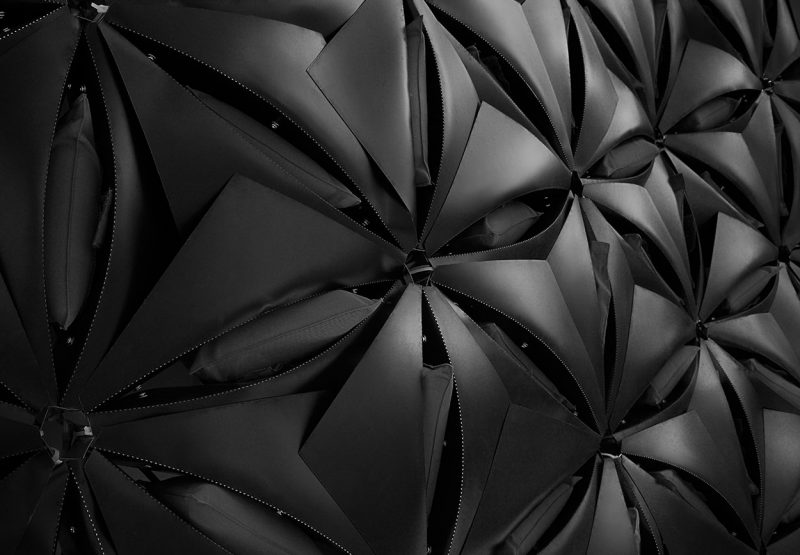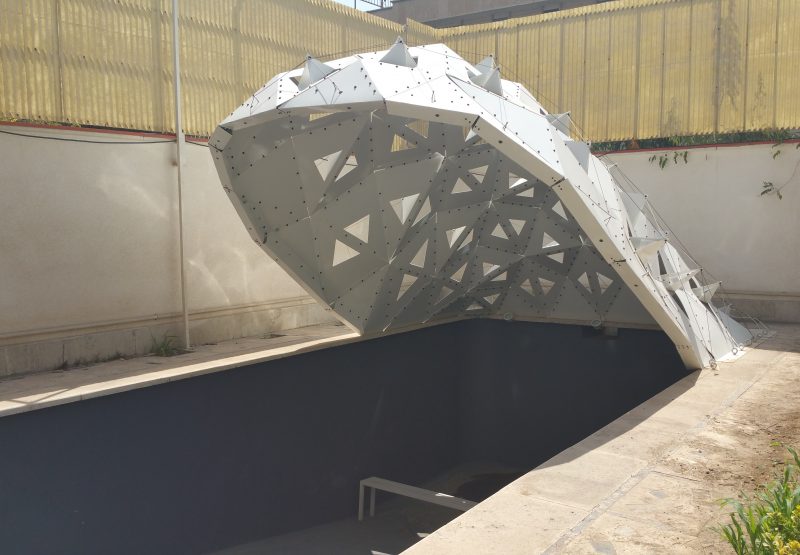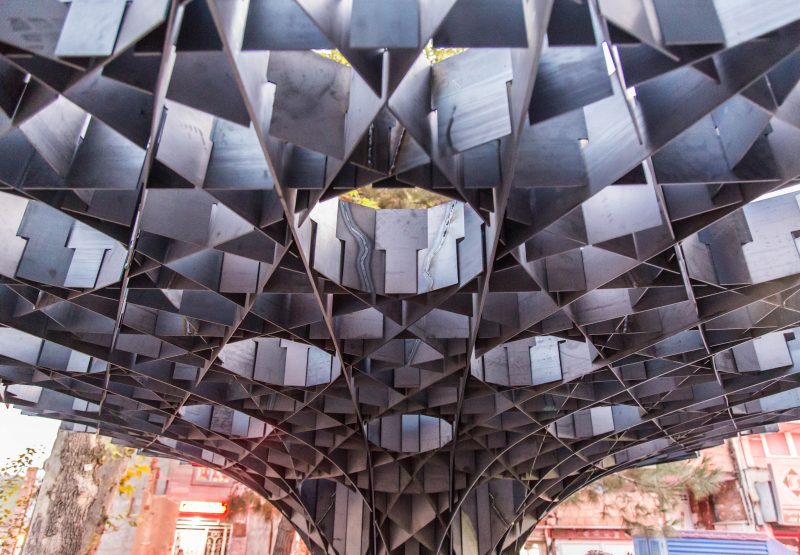Arch(k)inetic
Introduction Energy efficiency and sustainability are of fast growing importance in contemporary architecture, consequently the demand for adaptive building envelopes is increasing. Until now kinetic and adaptive building systems are mostly utilised by rigid components or flexible membranes, guided along straight translation axis or rotational movements – resulting in geometrical constraints. The high mechanical complexity and as a consequence thereof high demand of maintenance as well as the tendency to complex building geometries in contemporary architectural design make it valid to investigate compliant mechanisms as alternative solutions of adaptive building systems. Compliant mechanisms achieve their flexibility by controlled elastic deformation of flexible members. In contrast to conventional rigid body mechanisms they consist of only one part with locally defined stiffness. These mechanisms can transfer motion, force or energy upon deformation of the flexible parts. The main advantage of compliant mechanisms is the reduction of parts, resulting in an economical potential due to simplified manufacturing and assembly. Furthermore, wear can be reduced and other than in classical joints there is no need for lubrication and maintenance (Howell 2013). Compliant systems for architectural applications have been realised with projects such as the Thematic Pavilion at the EXPO 2012 in South Korea (SOMA Architects with Kinppers Helbig Advanced Engineering), as well as the Flectofin® (Schleicher et al. 2015) and Felctofold (Körner et al. 2016) façade shading devices, developed at ITKE University of Stuttgart, which was inspired by the opening mechanism of the Strelitzia Reginae and Aldrovanda. The mentioned examples make use of the elasticity of the used materials - mainly fibre reinforces polymers (frp) - in combination with geometrical articulation to adapt their shape through elastic deformation to distinct functional demands, without mechanical hinges or the geometrical constraints of linear translation axis. Arch(k)inetic The two week’s workshop ARCH(K)INETIC 2016 investigated pneumatically actuated compliant mechanisms for adaptive kinetic building envelopes in combination with strategies for structural performative surface tessellations and adaptation of contextual ornaments. The workshop took place from 3rd to 18th September 2016. After 3 days investigating different strategies in small groups, one approach was chosen for further development and construction of a prototype during an intense 10 days design and construction workshop by all students and tutors together. The workshop included a series of software tutorials and lectures integrated into a research based design and construction project. The workshop was open for students of fields of design, architecture, scenography, and engineering. Component…



